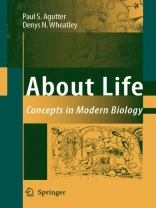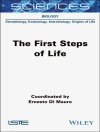Thanks to the popular media, and to books by Dawkins, Fortey, Gould, Margulis and other writers, people are informed about many aspects of biology. Everyone seems to know a little about evolution, for example, and about DNA and the possibilities (good and bad) afforded by research in molecular genetics. Most people know some of the arguments for and against the likelihood of life on other planets. And so on. We are glad that these pieces of information have become so widely available. However, we do not assume any particular knowledge (other than the most basic) in this book. Our aim is to address general questions rather than specific issues. We want to enable our readers to join their disparate pieces of knowledge about biology together. The most basic of these general questions – and perhaps the most difficult – can be expressed in beguilingly simple words: “What is life”? What does modern biology tell us about the essential differences between living organisms and the inanimate world? An attempt to answer this question takes us on a journey through almost the whole of contemporary cell and molecular biology, which occupies the first half of the book. The journey is worth the effort. The provisional answer we attain provides a coherent, unifying context in which we can discuss evolution, the origin of life, extraterrestrial life, the meaning of “intelligence”, the evolution of the human brain and the nature of mind.
Cuprins
Introduction.- Ingredients of the Simplest Cells (Prokaryotes and the Sizes of their Contents).- Bigger Cells (Eukaryotic Cells and their Contents).- Hives of Industry (A Survey of Intermediary Metabolism).- Delights of Transport (Mechanisms by which Cellular Contents are Moved around).- As if Standing Still (Cellular Homeostasis and Regulatory Processes).- Internal State and Gene Expression (Transcription and its Control).- Sustaining and Changing the Internal State (The Interrelationship between Gene Expression and the Cell’s Current Composition and Functional State).- Responding to the Environment (Signal Processing and its Relationship to Cell Structure, Metabolism and Gene Expression).- The Living State (A general characterization of ‘life’).- Stability and Change in DNA (Why DNA is highly stable and a Survey of the Mechanisms by which it can Change).- The Spice of Life (Variety, Habitats, Natural Selection, Symbiosis, Ecosystems).- Curriculum Vitae (An Outline History of Life on Earth).- The Origin of Life (Major Ideas and Unanswered Questions).- Other Worlds (Ideas about Extraterrestrial Life, including a Critique of the Assumptions behind the ‘Drake Equation’ and the SETI Project).- Intelligent Behaviour and Brains (The Meaning of ‘Intelligence’).- Human Intelligence (Human Evolution and the Question of Human Uniqueness).- Cells, Brains and Computers: towards a Characterisation of Mind.- Glossary.- Bibliography.











